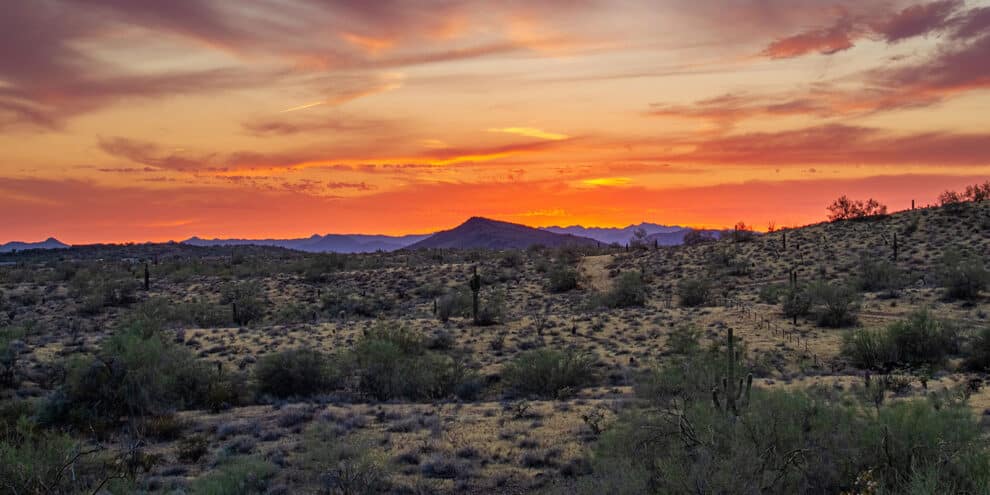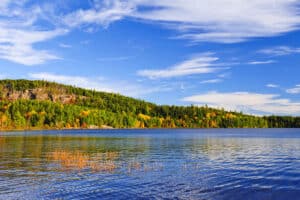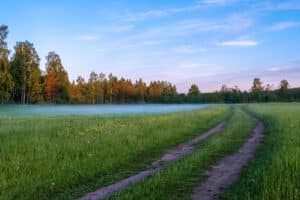The most successful off-grid property owners I work with aren’t seeking perfect convenience, but rather understanding their legal rights and strategically exercising them. As such, where access challenges are typically framed as obstacles, knowledgeable buyers will find a way to turn the obstacles into advantages.
I’ll admit something that might sound contradictory – while I regularly advise clients to be wary of properties with intimidating gates and “No Trespassing” signs, I’ve noticed an interesting pattern once they become owners. The same buyers who were initially put off by these barriers often end up installing their own “Private Property” signs within months of purchase. I’ve come to realize that what feels unwelcoming when you’re the outsider provides exactly the privacy and seclusion most off-grid enthusiasts are seeking once they’re the owners. As one client told me with a laugh, “I hated fighting through those barriers to view the property, but now that I own it, I love that they keep everyone else out!”
There’s also a significant economic advantage to consider. Installing proper gates and fencing can easily cost several thousand dollars – I’ve seen basic gate systems start at $2,500 and run upwards of $10,000 with advanced features. When you purchase a property behind existing gates, you’re essentially buying into a “gated community” where someone else has already absorbed these substantial costs. You receive all the security and privacy benefits while the previous owners foot the bill.
Due Diligence: Investigating Access Before Purchase
After helping clients navigate hundreds of access problems, I’ve developed a thorough due diligence protocol:
Title Research Beyond the Basics
Standard title insurance often excludes access issues. Now I insist on:
- Access endorsement coverage whenever available
- Historical easement documentation review
- Chain of title examination for all properties crossing the access route
- Detailed review of any road maintenance agreements
Physical Inspection in Multiple Conditions
I always tell clients, “If you haven’t visited in the worst weather, you haven’t seen the real property.” My checklist includes:
- Travel the access route in different seasons
- Bring the actual vehicles you’ll use regularly
- Document everything with photos and GPS coordinates
Leveraging Local Expertise
Some of my most valuable insights have come from unexpected sources. I recommend consulting:
- County officials who may have historical knowledge and resources
- Local delivery drivers who know which roads become impassable
- Neighboring property owners who’ve navigated the same challenges
Creative Solutions for Access Challenges
When perfect access doesn’t exist, I’ve helped clients implement various creative solutions:
Easement Strategies
For landlocked properties, I’ve successfully assisted clients in negotiating new easements through approaches like:
- Purchasing small “access strips” to create direct road frontage
- Trading services for access rights
- Developing shared maintenance agreements that fairly distribute costs
Alternative Access Methods
My more adventurous clients have embraced alternative strategies:
- Strategic scheduling around seasonal conditions
- Equipment investments for challenging terrain
- Staging strategies for material delivery
Valuation and Investment Considerations
The silver lining to access challenges? They create genuine opportunities for investors willing to solve problems. I’ve consistently observed that:
- Properties with excellent access command 30-50% higher values than comparable parcels with significant access limitations
- Solving access issues often results in immediate equity creation
- The return on investment for strategic access improvements frequently exceeds 150%
The perfect off-grid property strikes a balance between accessibility and seclusion. With proper research, realistic expectations, and sometimes creative solutions, access challenges can often become strategic advantages.
I’ve watched too many buyers walk away from otherwise perfect properties because of perceived access problems, while others purchase without proper investigation and face costly surprises. The key difference? Understanding the realities of off-grid access and conducting thorough due diligence before making commitments.
To learn more about the challenges associated with different types of land access for rural, undeveloped and off-grid properties, be sure to read The Hidden Cost of Isolation: What Every Buyer Must Know About Off-Grid Land Access.
This content may not be used or reproduced in any manner whatsoever, in part or in whole, without written permission of LANDTHINK. Use of this content without permission is a violation of federal copyright law. The articles, posts, comments, opinions and information provided by LANDTHINK are for informational and research purposes only and DOES NOT substitute or coincide with the advice of an attorney, accountant, real estate broker or any other licensed real estate professional. LANDTHINK strongly advises visitors and readers to seek their own professional guidance and advice related to buying, investing in or selling real estate.










Add Comment